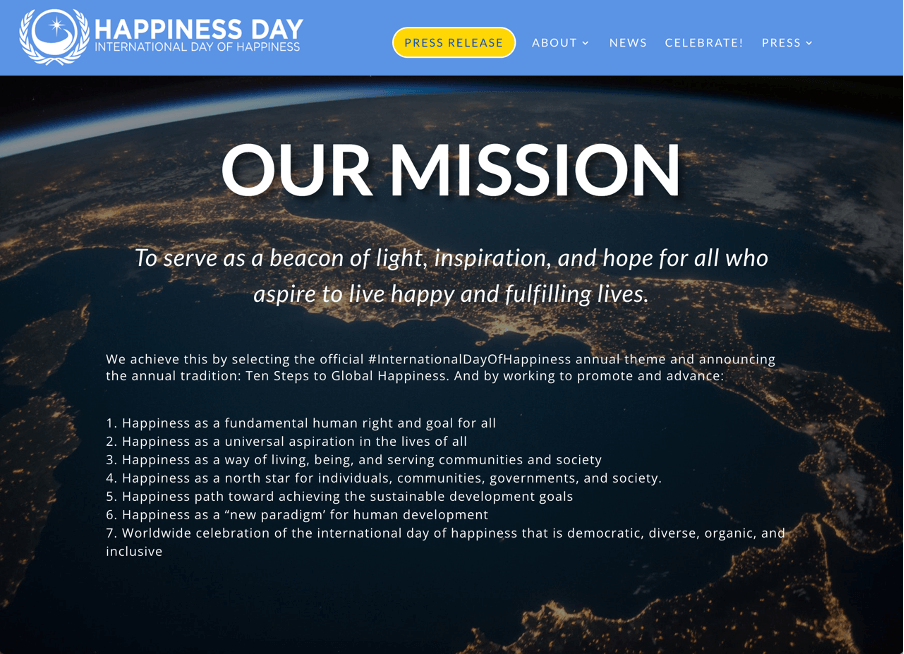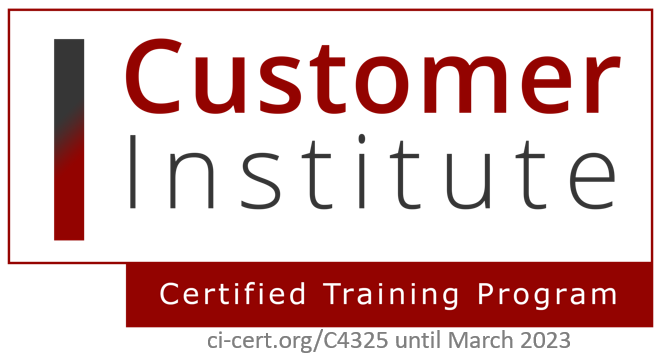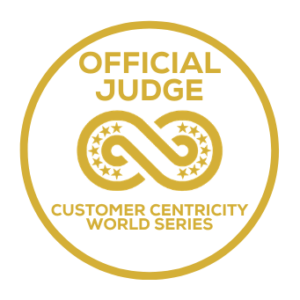In this post, also available as an episode of the Happiness Contribution™ Show, I share with you my definition of Happiness, the three types of happiness and related aspects, why Happiness Contribution is a better goal than happiness and became a podcast show, and about International Day of Happiness and the yearly World Happiness Report.
Watch the webcast on YouTube
Listen to podcast on your favorite platform
Three types of happiness
My definition of happiness is inspired by Gandhi’s quote: “Happiness is when what you think, what you say, and what you do are in harmony.” To which I have added two elements: feelings and experiences, coming to the following definition: “Happiness is when what you think, what you say, what you do, what you FEEL, and WHAT YOU EXPERIENCE are in harmony.”
What does it mean in practice?
Bridging from psychology and neuroscience to business, and taking into account the learnings from my own personal happiness journeys, we can identify 3 types of happiness and 5 related aspects:
- Hedonic happiness: pleasure & pleasant life
- Feeling through our 5 senses
- Result of our DOSE of happy chemicals: dopamine, oxytocin, serotonin, endorphin
- Eudemonic happiness: the flourishing life
- happiness as an emotion triggered as a response to our needs and whether they are met, exceeded, or unmet. We can nurture these needs by filling up the 9 petals of the sunflower of happiness (Health, Autonomy, Purpose, Play, Integrity, Nature, Empathy, Simplicity, and Smile)
- happiness as well-being and neural pathways (like brain muscles) that we can develop and keep active through continuous practice, i.e. by taking care of our SPIRE Wholebeing (Spiritual, Physical, Intellectual, Relational, and Emotional Wellbeing)
- Mature happiness (as defined by Paul Wong): is characterized by inner harmony, acceptance, gratitude, contentment, and having peace with oneself, others, and the world. Such happiness is the outcome of self-cultivation with respect to spiritual and psychological maturity and is more relevant to collectivist societies and suffering people.
- Happiness as an attitude and way of living, a path, and way of walking, rather than a destination.
In Yellow Factor, we focused mostly on the first three related aspects of the 5 aspects. And we also reference the metaphor of the sun introduced by Tal Ben-Shahar to explain that happiness is like the sun. We need the sun to live, and plants need the sun to grow and produce oxygen, but we can’t look straight into the sun – unless we want to get blinded – and we shouldn’t pursue happiness directly – unless we want to end up depressed for never achieving it.
If we extend the metaphor of the sun to the three types of happiness, we can say that:
- Hedonic happiness is like sunbathing on the beach (sometimes without skin protection or at the less healthy time of the day) or laying on a tanning bed to gain skin color (somewhat regardless of long-term consequences)
- Eudemonic happiness is like taking the needed quantity and quality of walks in nature while the sun is shining, and exposing oneself to a healthy and nurturing dose of light (both physical and emotional, i.e. with people that shine their light respecting and appreciating others’ light)
- Mature happiness is being able to go through dark hours or days, stormy windy, and rainy days, knowing that behind every cloud the sun is still shining, that you can’t have light without dark, that there is value in the rain, and we need clouds and rain to see the rainbow, all while keeping one own inner light shining and lighting others up.
Questions for ReflectAction!
Which of these types of happiness are more present in your life?
Which of these do you intentionally allocate more time, focus, and practices to?
Which of these would you like to learn more about?
What can you do today to experience more happiness?
Share with us in the comments and join us on this learning journey.
WHY HAPPINESS CONTRIBUTION
Why is Happiness Contribution a better goal than happiness, both in life and in business?
In life, keeping the sun metaphor, instead of pursuing happiness directly (looking into the sun and getting blinded), we need to pursue happiness indirectly focusing on things that make us happy, that contribute to our happiness, like nurturing the 9 petals of the sunflower of happiness and/or taking care of our SPIRE wellbeing. I have written more about this in the post 15 tips to cultivate Happiness and blossom like a sunflower
When it comes to business, I first started talking about Happiness Contribution in 2016 when reflecting on the pitfalls of Net Promoter Score, I started thinking about a new way to measure an organization’s impact on people’s lives that would make visible (if and) how much we are contributing to happiness.
I wondered: wouldn’t it be a more meaningful “score” objective if we could say to our employees “let’s improve our Happiness Contribution™”, rather than saying “let’s increase our Net Promoter Score”?
In my TEDx Talk about Happiness Driven Growth, in May 2016, I shared my wish that by 2021 companies, organizations, universities, municipalities, and even countries would compete for the yearly “Highest Happiness Contribution™ Award.”
While I didn’t see that happen yet, in 2021 I decided to focus on what I could control, and this is how the idea of a Happiness Contribution™ Show was born, to widen the learning sharing and the message’s reach with a podcast.
Yellow Goldfish and Yellow Factor as Ways To Contribute To Happiness
Already in 2017, I had decided to start collecting systematically more examples of companies that are contributing to happiness and that is when I partnered with Stan Phelps to write Yellow Goldfish.
We defined a Yellow Goldfish as anytime a business does a little extra to contribute to the happiness of its customers, employees, or community and society. And we identified nine paths – or Yellow Factor – that we can follow both to contribute to our own happiness and to increase happiness in business to delight customers and employees, and to drive growth, productivity, and prosperity.
There are 3 main reasons why Contributing or contribution is a keyword for us.
- “Happier” is a better goal than “Happy.”
We believe in the approach of Tal Ben-Shahar. According to Ben-Shahar, “Am I happy?” is a closed question that suggests either you are happy, or you are not. With this question, happiness is a binary happy—unhappy with a presumed finite point that, when reached, signifies the termination of the pursuit. We can always be happier; no person experiences happiness all the time. The better question Tal Ben-Shahar proposes to ask in Happier is, “How can I become happier?”, which Stan and I translated in “What contributes to my happiness?”
- Happiness is unlimited. We make more of it when we make others happier.
In Happier Tal Ben-Shahar, also shares Kennon Sheldon and his colleagues’ research on goals and happiness, which concluded that the pursuit of goals involving growth, connection, and contribution can lead to greater well-being than goals involving money, beauty, and popularity.
In 10 Keys to Happier Living, Vanessa King’s GREAT DREAM framework starts with G for Giving. She shares that research proves the virtuous circle of the science of giving: helping others can make us happier and happier people tend to help others more.
- Even when there is suffering, we can always bring the light and contribute with our presence.
Yellow Factor, the extended second publishing of Yellow Goldfish, has an extra chapter focusing on the metaphor of the sunflower, which we chose as a representation of the What (each petal representing an element of Happiness, aka a Yellow Factor) and the How (for each stage of Growth).
The inspiration for the sunflower comes from three elements:
- Sunflowers’ growth
- Seeds
- Sun
#1 Sunflower’s growth – The five elements that can make a difference in the growth of a goldfish (quality of water, size of the bowl, number of fishes in the bowl, first 90 days, and DNA), very much influence also the growth & blossoming of the sunflower (quality of ground, size of the pot/field, number of other seeds in the pot or soil, first 60 days of life, genetic makeup) and correspond to the elements that influence company’s growth: the market, economy, competition, start-up phase, differentiation. Companies can only control their differentiation.
Over the last few years, and even more so during the Covid pandemic in 2020 which proved how lack of Health (the first Yellow Factor) can totally impact the economy, I have come to believe that Happiness actually allows us to influence all of the five factors, contributing to the quality of the ground/economy, transforming competition in collaboration, increasing the size of the economy, creating better start-ups and improving differentiation!
#2. Seeds – not only the DNA of sunflowers’ seeds is a key element for their own growth, but once the sunflower has reached its full blossoming, contributing to the happiness of anyone who looks at them, their seeds actually take on a life of their own with dozens of possible uses and further contribution to other species’ growth and happiness.
#3. Sun – Sunflowers get energy through photosynthesis. The bud (the first flower head sunflower matures around 35 to 65 days after seeding) tries to get all the hours of sunlight possible to gain energy to develop and enlarge; it does this by following the sun, a fascinating phenomenon called heliotropism. In days when the sun is hiding behind the clouds, the buds actually turn to face each other instead. Following the sun, the plant can nourish itself, converting the sun’s energy into chemicals that will make the overall plant big, strong, and healthy enough to support the large flower head when it opens. Once the full flower emerges, the sunflower head stops following the sun and stations itself by facing East all the time, so that it can focus all its attention on growing as a big bloom and attracting pollinators.
In many different faith traditions as well as in the secular world, many people are encouraged to be light to others or to bring light to others: in times of darkness we can offer hope, encouragement, kindness, and compassion; in times where others are struggling we can offer a way to help them to see the good and the beautiful so they can regain their glow and shine; in times of doubts to “Be the Light” may be to offer wisdom and guidance, or just to sit with someone, and be the presence they need; in times of difficulties, we can show support and resilience to those that are feeling vulnerable; finally, at any time we can simply offer a smile and joy to someone, in random parts of our day. And most all, we can all be role models and increase overall light and energy, by turning on our own lights.
Even when companies choose other ways than happiness to differentiate themselves, every company and each of us can still have a Yellow Factor and do their little extra that seeds happiness, shines sunlight, and contributes to a happier, healthier world.
Similarly, when we are faced with suffering like the loss of a dear one, a pandemic or dramatic situations like a war, where talking about happiness seems off or is surely more challenging to pursue, each of us can still make a small contribution to someone else happiness.
Ultimately, happiness comes from within, it’s the path we choose to travel and the light with which we make the journey.
This is the reason why I like to talk about happiness contribution more than about general happiness, and why in the Happiness Contribution podcast I want to explore knowledge and practices each of us has developed that contribute to happiness inwards at our individual level for ourselves or outwards, for our inner circle (close family, friends, and colleagues) or wider circle (our clients, partners, employees, and community).
The question I want to explore is: “How can we contribute more to our happiness and the happiness of others, and by doing so drive peace, prosperity, and profits for everyone?”
Questions for ReflectAction!
What does happiness contribution mean to you?
What contributes to more happiness in your life? (If you want you can use the “Sunflower of Happiness template in this post to see how full is your “pollen tank” on each petal)
How do you contribute to more happiness in other’s people life?
How can you contribute to more happiness in other’s people life?
How will you contribute to someone’s happiness today?
Share with us in the comments and join us on this learning journey.
Lastly, a few words about the yearly International Day of Happiness and World Happiness Report.
International Day of Happiness
March 20th is the UN International Day of Happiness. With our world facing unprecedented challenges, wellbeing matters more than ever. When we choose to take action to help others, they benefit, we benefit, and we set an example of kindness that can ripple out into the world too. The International Day of Happiness is an annual celebration of happiness as a fundamental human right and goal for all of humanity. 2022 year’s theme is #HAPPINESSFORALLUKRAINE
History of International Day of Happiness
The idea was introduced to the United Nations by advisor Jayme Illien back in 2011. Jayme Illien is also the Founder of “Happytalism” together with Luis Gallardo, President of the World Happiness Foundation.
The General Assembly of the United Nations agreed with the proposal and officially founded the International Day of Happiness in July 2012, with the occasion first being observed in 2013. The celebration acknowledges how important and desirable happiness is to people everywhere and how essential it is that happiness is incorporated into public policy.
International Day of Happiness is celebrated and hosted by various organizations, including Action for Happiness, Happinessday.org, and the United Nations, and by more and more companies at a local level with their employees. And it is also the yearly date by which the World Happiness Report gets published.
Are you and your company already celebrating the 20th of March? How?
On the UN website, you find 10 steps to celebrate this day. Additionally, I can support you with a dedicated keynote to raise awareness, a dedicated Happiness Booster Session, or copies of my books for your entire team.
World Happiness Report
2022 marked the 10th anniversary of the World Happiness Report, which uses global survey data to report how people evaluate their own lives in more than 150 countries worldwide. The World Happiness Report 2022 reveals a bright light in dark times. The pandemic brought not only pain and suffering but also an increase in social support and benevolence.
Although the World Happiness Reports are based on a wide variety of data, the most important source has always been the Gallup World Poll, unique in its range and comparability of global annual surveys. Life evaluations from the Gallup World Poll provide the basis for the annual happiness rankings between different nations which sparkles widespread interest.
In these beautiful infographics, you can see Global Happiness Levels in 2022 Mapped across countries.
The report has had a large and growing readership — reaching over 9 million in 2021 – and carries three important messages:
- the true measure of progress is the happiness of the people;
- happiness can be measured; and
- we know a lot about what contributes to happiness.
Given this knowledge, it is now possible for policy-makers to make people’s happiness the goal of their policies. And each of us can live a wiser life. And it is possible for conscious leaders and corporate executives to make people’s happiness part of their companies’ goals knowing that happy customers are the most profitable ones and happy employees have the highest return on investment. Hence happiness does matter to the bottom line and can surely be a competitive advantage.
And it is on the basis of these findings and the latest Science of Happiness that we have created and run our Nurture Happiness Driven Growth Programs
How can I contribute to more happiness in your life and work?
Here are a few FREE options for you:
- Join my FREE 15-20 minutes LaugherZoom session
- Listen to our podcast: Happiness Contribution™ Show
- Sign up for our monthly Happinews
- Check out my FREE Vault where you will find plenty of downloadables to support you on your HCX journey to create more Human-Centered and Happiness-Contributing Experiences for yourself and everyone you interact with or design experiences for.
And here are a few (PAID) options to bring more happiness to your team or organization:
- Keynotes: Happiness Driven Growth
- Sessions: Happiness Booster Sessions
- Training: 6 weeks “Stress Buster Joy Blaster”, 6 weeks “Wellbeing Boost“, and 7 months Happiness Leadership Program
- NEW Open Sessions & Programs
Stay healthy, happy, and yellow!
Keep Smiling! Start Laughing!
💛 🌻 ☀️ Yours truly, Rosaria
* If you would like to know more about how to pursue Happiness Driven Growth in your company or would like us to deliver an engaging talk or masterclass about it at your event, get in touch or simply follow Rosaria Cirillo on LinkedIn & Instagram to receive her inspirational DOSE of Happiness.
** Customer experience is the perception customers have of the interactions with your company along every touchpoint and communication. It’s their truth. Great customer experiences don’t happen by chance. Instead, they require the orchestration of six disciplines across different teams and the mastering of six competencies. Would you like to learn more and grow your Customer Experience competencies? Get in touch to find out more about our newest HCX Online Academy, our in-company HCX Masterclasses, and HCX (Human-Centred and Happiness-Contributing Experiences) approach.
*** Yellow Factor is available for sale on Amazon/Kindle. Find links to your local Amazon store here. Did you already enjoy reading Yellow Factor and want to help us inspire more people? Helps us spread the word by sharing the quote that most resonated with you and by posting a picture of you with our book on social media using hashtags: #YFITW #YellowFactorInTheWorld #YellowFactorQuote #choosehappiness
About Rosaria
I’m an Italian sunshine of energy, enthusiasm, and passion, living in the Netherlands. I’m a Certified CX & Happiness Trainer, Advisor, Speaker, and Author with a mission to bring more happiness in the world one interaction at a time, the business world being my chosen playground!
I help conscious leaders make happiness their company’s competitive advantage with advisory, speaking, and training focusing on improving customer & employee experience (using VOC, VOE, and VOP as drivers for change).
I’m committed to empowering leaders and companies to achieve growth, productivity, and profits by cultivating happiness. Get in touch to find out how can I help you and your team with keynotes, training, and advisory services
Accelerate your HCX Transformation
Are you relentlessly trying to improve Customer & Employee Experience to ensure business growth? Perhaps your initial efforts are paying off, yet not enough and there is still something missing. How can your company achieve “remarkable” results while your employees feel that they make a meaningful contribution to a better world? Would you like to know how you can thrive and blossom while generating profits thanks to high retention? Check out our Training Programs based on the Happiness Driven Growth Model.
Nurture your well-being and flourish
The last 3 years have been tough! Working from home has taken a massive toll on all of us with reduced physical and social activities, increased stress, loneliness, and burnout. Chances are, you often ask yourself “how do I take care of my well-being with the limited time and resources I have? And where do I even start?”. Would you like to know how you can thrive and blossom in life and in business? Check out our Open Programs to nurture your well-being and increase your customer & employee experience knowledge.











 A (little Italian) sunshine of energy, enthusiasm, and passion, with a mission to bring more happiness in the world one interaction at the time, the business world being my chosen playground!
I inspire and empower conscious leaders to nurture their happiness (moving from depleting to enriching emotions) and to move from depleting to enriching experiences, choosing, designing, and delivering WOW life-enriching interactions that contribute to everyone’s HAPPINESS, so they can achieve business and personal prosperity, making happiness their competitive advantage
A (little Italian) sunshine of energy, enthusiasm, and passion, with a mission to bring more happiness in the world one interaction at the time, the business world being my chosen playground!
I inspire and empower conscious leaders to nurture their happiness (moving from depleting to enriching emotions) and to move from depleting to enriching experiences, choosing, designing, and delivering WOW life-enriching interactions that contribute to everyone’s HAPPINESS, so they can achieve business and personal prosperity, making happiness their competitive advantage 









